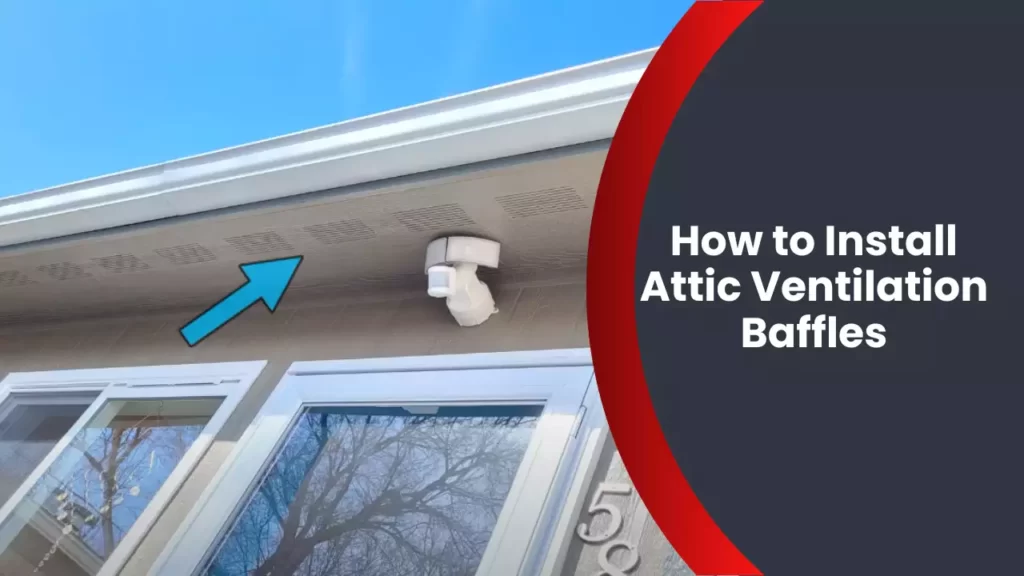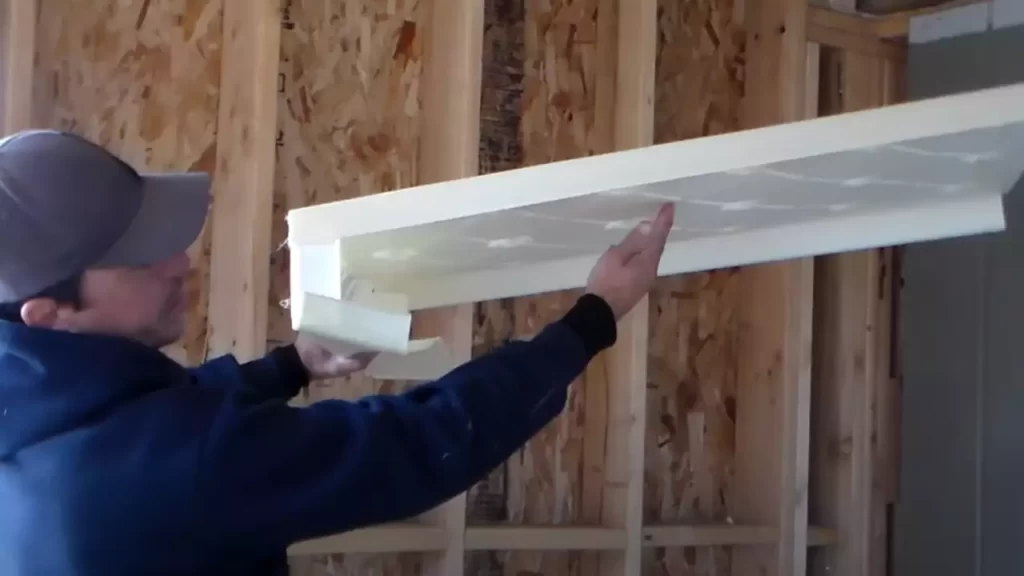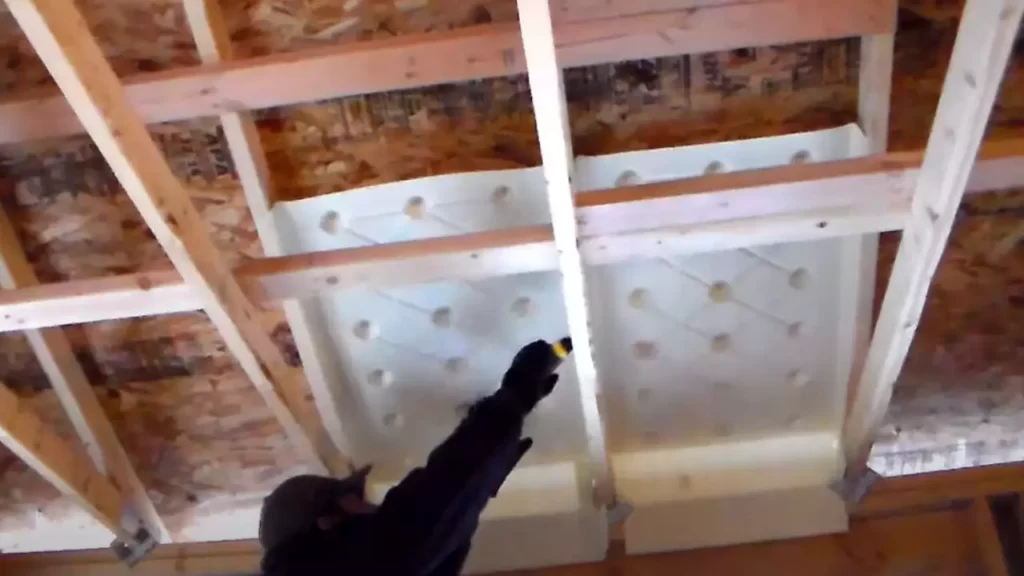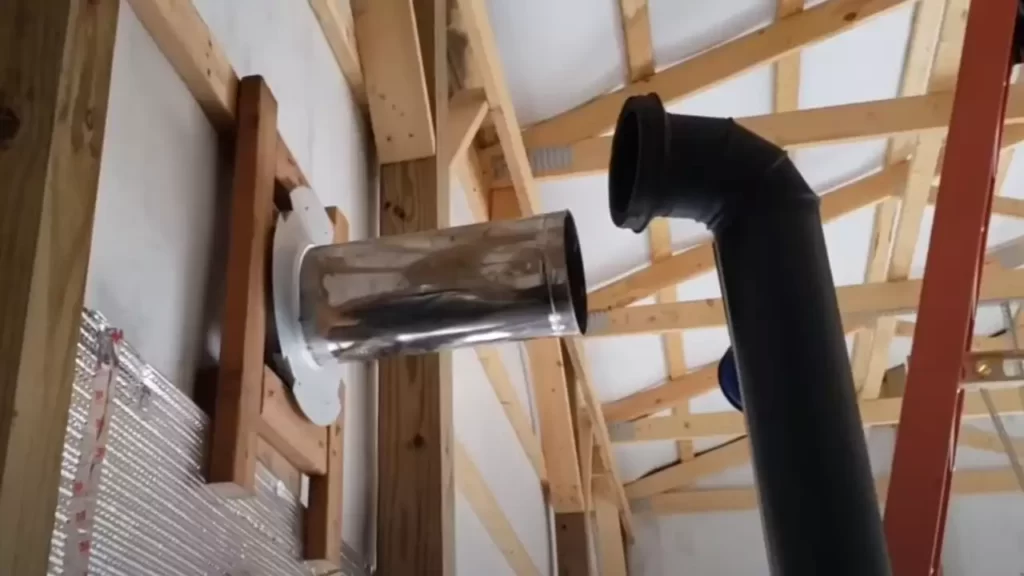To install attic ventilation baffles, start by measuring the width of the attic space and cutting the baffles to fit. Then, place the baffles in between the rafters, ensuring they are secured with staples or screws.
Why Attic Ventilation Is Crucial For Your Home’S Health
Understanding the role of attic ventilation in maintaining a healthy home
Attic ventilation might not be the first thing that comes to mind when thinking about home maintenance, but it plays a crucial role in ensuring the health of your home. Adequate ventilation in your attic helps in regulating the temperature and moisture levels, which is essential for a healthy living environment.
When the temperature rises, especially during the hot summer months, the attic can become a breeding ground for heat. Without proper ventilation, the heat gets trapped, causing the temperature to rise even further. This can have a significant impact on your home’s energy efficiency, as excess heat makes it harder for your air conditioning system to keep the rest of your home cool.
Poor attic ventilation can also lead to:
The negative effects of poor attic ventilation on your property
| Excessive Heat | Moisture Build-up | Condensation |
|---|---|---|
| 1. Increased energy costs due to overworking air conditioning systems. | 1. The presence of moisture can lead to the growth of mold and mildew. | 1. Condensation can cause damage to wood and insulation in the attic. |
| 2. Structural damage to the roof, such as shingle deterioration. | 2. The moisture can also damage the attic’s insulation. | 2. Warped or rotting wood can compromise the structural integrity of your home. |
| 3. Reduced lifespan of your roofing materials. | 3. Higher humidity levels can make the entire home feel uncomfortable. | 3. Condensation can cause water stains on ceilings and walls. |
To prevent these negative effects, it’s vital to ensure your attic has proper ventilation. Installing attic ventilation baffles can significantly improve the airflow in your attic, allowing hot air to escape and fresh air to circulate. Ventilation baffles are typically made of rigid foam or plastic and are installed between the rafters, creating a pathway for air to move.
By choosing the right attic ventilation products, you are investing in the long-term health of your home. Not only will it help regulate temperature and moisture levels, but it will also extend the lifespan of your roof and prevent costly repairs down the road.
Remember, maintaining a healthy home starts from the top. Take the necessary steps to ensure your attic has proper ventilation, and you’ll enjoy the benefits of improved energy efficiency, a comfortable living environment, and lower maintenance costs.

Benefits Of Installing Attic Ventilation Baffles
Attic ventilation baffles are an essential component of a well-ventilated attic space. They play a crucial role in improving air circulation and reducing energy costs. Let’s take a closer look at the benefits of installing attic ventilation baffles.
How Attic Ventilation Baffles Improve Air Circulation in Your Attic
Proper air circulation in the attic is essential for maintaining a healthy and functional space. Attic ventilation baffles are designed to facilitate the flow of fresh air from the outside into the attic, while expelling stale air. They achieve this by creating a space for air to circulate freely between the insulation and the roof deck.
These baffles are typically made from a rigid material, such as foam or plastic, and are installed between the rafters or trusses of the attic. They form a channel that allows air to move effectively. By preventing stagnant air from building up in the attic, ventilation baffles help prevent moisture accumulation, mold growth, and other potential issues that can compromise the structural integrity of your home.
The Impact of Proper Ventilation on Reducing Energy Costs
Proper attic ventilation is not only beneficial for the health of your home, but it also offers significant energy-saving advantages. During hot summer months, attics can become extremely hot, trapping heat inside the space. Without proper ventilation, this trapped heat can seep into your living spaces, making your cooling system work harder and increasing your energy bills.
Attic ventilation baffles play a crucial role in expelling hot air from the attic, keeping the space closer to the ambient temperature outside. This reduces the strain on your cooling system, allowing it to operate more efficiently and effectively. By effectively managing attic temperature, ventilation baffles help to decrease your energy consumption and ultimately lower your cooling costs.
During the winter months, proper attic ventilation also prevents the buildup of moisture that can lead to ice dams on your roof. The ventilation baffles ensure that any warm, moist air from the living spaces below is directed outside, preventing it from condensing and causing damage to your roof. This not only helps to sustain the life of your roof but also reduces the need for costly repairs.
Conclusion
Installing attic ventilation baffles is a wise investment that offers numerous benefits for both your home and your wallet. Improved air circulation in your attic ensures a healthy and functional space, while reducing energy costs. Whether you’re concerned about moisture accumulation, mold growth, or excessive energy consumption, ventilation baffles provide the solution you need to optimize your attic’s performance.

Factors To Consider Before Installing Attic Ventilation Baffles
Factors to Consider Before Installing Attic Ventilation Baffles
Determining the size and type of baffles required for your attic
When it comes to installing attic ventilation baffles, one of the first factors to consider is determining the size and type of baffles required for your specific attic. Attic ventilation baffles are essential for maintaining proper airflow and temperature regulation in your attic space, preventing moisture buildup and potential damage to your roof. To ensure efficient installation and optimal performance, it is crucial to select the right size and type of baffles that are suitable for your attic’s unique characteristics.
To determine the size of baffles required, you need to measure the depth of your attic insulation. Measure from the ceiling joists to the top of the insulation to get an accurate measurement. This will help you choose baffles that are long enough to extend from the eaves to the top of the insulation, ensuring proper airflow throughout the entire attic space.
In addition to size, the type of baffles you choose is also important. There are different types of baffles available, including foam baffles and cardboard baffles. Foam baffles are more durable and resistant to moisture, making them a great option for areas with higher humidity levels. On the other hand, cardboard baffles are more affordable but may not offer the same level of durability.
Understanding the specific needs of your attic space
Apart from determining the size and type of baffles, it is crucial to understand the unique needs of your attic space. Each attic is different, with varying levels of insulation, ventilation requirements, and potential obstructions that may need to be considered during the installation process.
Start by evaluating your current attic ventilation system. Identify any areas of concern, such as blocked vents, limited airflow, or signs of moisture damage. This will help you identify the specific areas where baffles need to be installed to enhance ventilation and prevent potential problems in the future.
Moreover, it is advisable to inspect your insulation and ensure it is properly installed. Misaligned or compressed insulation can hinder the performance of attic ventilation baffles. Additionally, evaluate any potential obstructions in your attic, such as electrical wires, plumbing pipes, or HVAC ducts. These obstructions may require special attention and careful planning to ensure the baffles can be properly installed without compromising the functionality of existing systems.
In conclusion, before installing attic ventilation baffles, it is essential to consider factors such as determining the size and type of baffles required for your attic, and understanding the specific needs of your attic space. By carefully assessing these factors and taking appropriate measures, you can ensure efficient installation, optimal ventilation, and long-term performance of your attic ventilation system. Don’t forget to consult with a professional if you are unsure about the installation process or need expert guidance to ensure the best results for your attic space.

Popular Types Of Attic Ventilation Baffles
Exploring different materials and styles of baffles available in the market
When it comes to ensuring proper attic ventilation, installing attic ventilation baffles is essential. Attic ventilation baffles help in maintaining the balance between the intake and exhaust of air, allowing for proper circulation and preventing the buildup of moisture and heat. There are various types of attic ventilation baffles available in the market, each with its unique materials and styles. Let’s explore some of the popular options!
Comparing the pros and cons of each type for your specific situation
1. Foam baffles
Foam baffles are a common choice due to their ease of installation and affordability. Made from durable foam material, these baffles can be easily cut and fitted into the desired space. They provide excellent insulation and prevent the entry of debris into the attic. However, foam baffles may not be ideal for areas prone to extreme temperatures as they can deteriorate over time.
2. Cardboard baffles
Cardboard baffles are another cost-effective option for attic ventilation. They are lightweight and easy to handle, making the installation process relatively simple. However, cardboard baffles may not be as durable as other materials and may not be suitable for areas with high humidity or moisture levels.
3. Plastic baffles
Plastic baffles are highly durable and resistant to moisture and pests. They provide excellent airflow and insulation and are suitable for all types of weather conditions. Their sturdy construction ensures they can withstand extreme temperatures without deteriorating. Although they may be slightly more expensive compared to other baffles, their longevity and performance make them a worthwhile investment.
4. Metal baffles
Metal baffles, typically made of aluminum, are known for their exceptional durability and strength. They provide excellent protection against pests and can withstand harsh weather conditions. Metal baffles are an ideal choice for areas prone to extreme heat or heavy snowfall. However, their installation may require professional assistance, and they can be more expensive compared to other options.
5. Fabric baffles
Fabric baffles are an alternative option, particularly suitable for those who prefer a more eco-friendly choice. Made from breathable fabric materials, these baffles allow adequate airflow while still preventing the entry of pests and debris. They are generally easy to install and can be cut to fit specific spaces. However, fabric baffles may not be as durable as other materials and may require occasional replacement.
In conclusion, the choice of attic ventilation baffles depends on various factors, including your specific situation and budget. Considering the pros and cons of each type, you can make an informed decision that best suits your attic ventilation needs. Remember, proper attic ventilation is crucial for maintaining a healthy and energy-efficient home.

Preparing Your Attic For Baffle Installation
Before you begin installing attic ventilation baffles, it’s essential to prepare your attic space properly. Taking the time to ensure a clean and obstruction-free environment will not only make the installation process smoother but also optimize the effectiveness of the ventilation system in your attic. In this section, we’ll discuss two crucial steps for preparing your attic: ensuring the space is clean and free from any obstructions, and taking necessary safety precautions.
Ensuring the attic space is clean and free from any obstructions
To achieve optimal ventilation in your attic, it’s crucial to ensure that the space is clean and free from any obstructions. This step is essential as it allows for better airflow and prevents any debris or insulation from blocking the attic vents and baffles. Here are a few simple steps to follow:
- Clear out any clutter or storage items from the attic. This includes boxes, old furniture, and any other items that may be blocking the pathway to the vents.
- Remove any insulation that may be covering the soffit vents or the areas where the baffles will be installed. This will allow for proper airflow and prevent the insulation from obstructing the ventilation system.
- Inspect the attic for any signs of mold or water damage. If you notice any, it’s important to address these issues before proceeding with the baffle installation.
By ensuring that your attic space is clean and free from obstructions, you are laying the groundwork for a more efficient and effective attic ventilation system.
Taking safety precautions before starting the installation process
It’s important to prioritize safety when installing attic ventilation baffles. Here are some safety precautions to keep in mind:
- Wear protective gear such as gloves, goggles, and a dust mask to protect yourself from insulation particles and dust.
- Use proper lighting to ensure visibility in the attic. This may involve bringing adequate lighting equipment or using a headlamp for convenience.
- Take care when navigating your way through the attic to avoid any trip hazards or accidental falls. Make sure to step on secure joists and avoid stepping directly onto unsupported insulation.
By taking these safety precautions before starting the installation process, you can ensure a safer and more secure environment while working in your attic.
Installing Attic Ventilation Baffles
Attic ventilation is crucial for maintaining a healthy and energy-efficient home. One important component of a well-ventilated attic is the installation of ventilation baffles. These baffles, also known as insulation baffles or rafter vents, create a channel for air to flow freely from the soffits or eaves to the attic. Proper installation is essential to ensure maximum effectiveness. In this guide, we will walk you through the step-by-step process of installing attic ventilation baffles to help you improve the comfort and energy efficiency of your home.
Step 1: Measuring and marking the installation points for baffles
The first step in installing attic ventilation baffles is to measure and mark the installation points. To do this, follow these steps:
- Start by identifying the areas in your attic where you need to install the baffles. These are typically located between the eaves or soffits and the attic floor.
- Take accurate measurements of the space between the roof trusses or rafters where the baffles will be installed. It’s important to ensure that the baffles fit snugly and don’t leave any gaps.
- Using a pencil or marker, mark the installation points on the trusses or rafters, making sure to indicate the top and bottom edges of each baffle.
Step 2: Cutting and fitting the baffles into the eaves or soffits
Once you have marked the installation points, it’s time to cut and fit the baffles into the eaves or soffits. Follow these steps:
- Measure the length of each baffle based on the distance between the marked installation points.
- Using a utility knife or hand saw, carefully cut the baffles to the appropriate length, ensuring they fit snugly between the trusses or rafters.
- Insert the top edge of each baffle into the eaves or soffits, positioning it securely against the roof decking.
- Continue fitting the baffles one by one, making sure there are no gaps or spaces left between them.
Step 3: Securing the baffles firmly in place to prevent movement
After fitting the baffles into the eaves or soffits, it’s essential to secure them firmly in place to prevent movement. Follow these steps:
- Using a staple gun or appropriate fasteners, secure the bottom edge of each baffle to the attic floor or a rigid surface in the soffit area.
- Ensure that the baffles are securely fastened but do not compress the insulation or obstruct the airflow.
Congratulations! You have successfully installed attic ventilation baffles, improving the air circulation and energy efficiency in your attic. This simple yet crucial step can help prevent moisture buildup, reduce the risk of mold and mildew, and increase the lifespan of your insulation.
Additional Tips For Effective Attic Ventilation
Attic ventilation is crucial for maintaining a healthy and energy-efficient home. In addition to installing attic ventilation baffles, there are a few additional tips you should be aware of to ensure effective attic ventilation.
Inspecting and maintaining your attic ventilation system regularly
Regularly inspecting and maintaining your attic ventilation system is essential to ensure it is working at its optimal capacity. Over time, debris and dust can accumulate in the vents, obstructing the flow of air. This can lead to inadequate ventilation and potential problems such as mold growth or excessive heat buildup in the attic.
To inspect your attic ventilation system, follow these steps:
- Start by visually inspecting the vents from both inside the attic and outside the house. Look for any signs of blockage, such as leaves, dust, or animal nests.
- If you notice any obstructions, carefully remove them using a broom or vacuum cleaner. Be cautious not to damage the vents or dislodge any insulation during the process.
- Check the attic insulation for any signs of moisture or mold growth. Moisture can indicate inadequate ventilation or potential leaks in the roof.
- Ensure that the attic vents are not covered or blocked by insulation. Proper airflow requires clear pathways from the soffit vents to the ridge vents or other exhaust outlets.
- If you notice any damaged or missing vents, replace them promptly to maintain proper ventilation.
Understanding the signs of inadequate ventilation and troubleshooting tips
Inadequate attic ventilation can result in a variety of problems that can compromise the integrity of your home. Understanding the signs of inadequate ventilation and troubleshooting tips can help you address these issues effectively.
Here are some common signs of inadequate attic ventilation:
- Mold or mildew growth in the attic or on the underside of the roof sheathing.
- Excessive heat buildup in the attic, especially during hot summer months.
- Roof shingles that are deteriorating prematurely.
- Ice dams forming on the roof during winter.
- Musty odors or high humidity levels in the attic.
If you notice any of these signs, here are some troubleshooting tips:
- Check for obstructions in the attic vents and clear them if necessary.
- Ensure that the attic insulation is evenly distributed and not blocking the airflow.
- Consider adding additional attic ventilation, such as gable vents or powered attic fans, to improve airflow.
- If moisture is an issue, address any potential leaks in the roof or plumbing system.
- Consult with a professional if you are unsure about the cause of the ventilation problems or need assistance with repairs or upgrades.
By regularly inspecting your attic ventilation system and addressing any signs of inadequate ventilation promptly, you can ensure a healthier and more energy-efficient home. Don’t underestimate the importance of proper attic ventilation – it can make a significant difference in the comfort and longevity of your home.
Frequently Asked Questions
What Are Attic Ventilation Baffles And Why Are They Important?
Attic ventilation baffles are essential for maintaining a healthy and energy-efficient home. They promote air circulation in the attic, preventing condensation, mold growth, and damage to insulation. By allowing fresh air to enter and escape, baffles help regulate temperature and moisture levels, reducing the risk of costly repairs and improving overall comfort.
How Do I Know If My Attic Needs Ventilation Baffles?
Several signs indicate the need for attic ventilation baffles. Excessive heat and humidity, musty smells, and moisture-damaged insulation are common indicators. Additionally, if your home was built without baffles, it’s likely lacking proper airflow. Consulting a professional can help determine if your attic would benefit from installing ventilation baffles.
How Can I Install Attic Ventilation Baffles Myself?
Installing attic ventilation baffles is a simple DIY project. Start by clearing your attic space and locating the soffit vents. Cut channels in the insulation to create a pathway for the baffles. Insert the baffles from the soffit vents, ensuring they extend to the ridge vent or roof vents.
Use staples or nails to secure them in place. Remember to wear appropriate safety gear during the installation process.
Can I Install Attic Ventilation Baffles Without Professional Help?
Yes, most homeowners can install attic ventilation baffles on their own. With some basic tools and a little bit of guidance, you can complete the installation process efficiently. However, it’s crucial to follow proper safety precautions and consult experts if you have any concerns or doubts.
Professional assistance may be necessary for complex situations or if you lack experience with DIY projects.
Conclusion
Proper installation of attic ventilation baffles is crucial for maintaining a healthy and efficient home. By allowing air to flow freely, these baffles prevent moisture buildup and ensure the longevity of your attic and roof. Following the steps outlined in this guide, you can confidently install attic ventilation baffles and improve the overall comfort and energy efficiency of your living space.
Don’t neglect this essential component of your home’s ventilation system!
